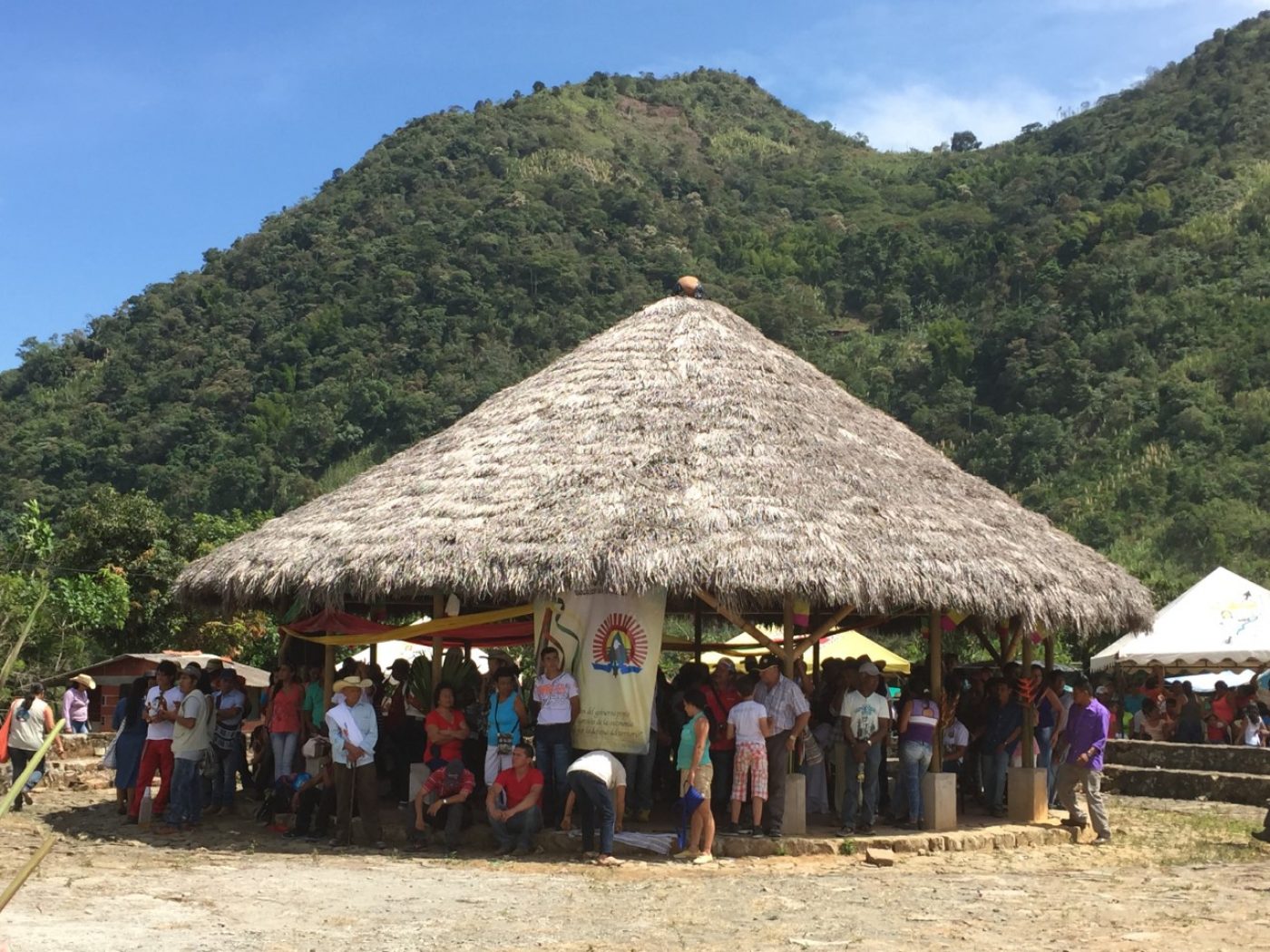Feb. 10, 2017
Constitutional Court recognizes Embera Chamí Land Rights and grants protection for ancestral mining activities.
“This is an historic judgment for the Indigenous Resguardo of Cañamomo Lomaprieta,” said Héctor Jaime Vinasco, ex-Governor of the Resguardo on hearing of the Courts Decision last week. “This judgment is a great opportunity to resolve issues caused by the lack of land titling, including exercising authority over our lands, applying our laws, thinking about economic development, and opposing projects that affect our survival as indigenous people.”
The judgement is the culmination of a decades long struggle by the Resguardo to secure official recognition for their lands in western Colombia. In the absence of formal land titles, the National Mining Agency has been able to grant permits and licences for gold mining within the Resguardo without consulting with or seeking the consent of the traditional authorities or Cabildo. These actions undermined the Resguardo regulations related to mining in their lands and threatened the livelihoods of the communities for whom gold mining is an ancestral activity. For centuries Embera Chamí people have self-regulated this activity even prior to the formation of the Colombian State. In what appears to be a legal first internationally, the court also gave explicit protection to ancestral mining activities carried out by some of the 32 communities within the Resguardo.
The Court ruling also orders that the demarcation and titling of the Resguardo’s lands be completed within one year and suspends the issuing of new mining permits or formalisation of mining activities during this period. Moreover, any future mining on the officially recognised territories can only proceed with the effective participation (including free, prior and informed consent) of the Cabildo. The court also explicitly protects the ancestral mining activities carried out by communities within the Resguardo, currently considered to be illegal.
Along with its direct impact on the Resguardo Cañamomo Lomaprieta’s 32 communities, this court ruling has important implications for other indigenous and Afro-Colombian communities in Colombia seeking formal recognition and protection of their land rights. About 30% of Colombia’s land is occupied by 768 indigenous reserves, while an estimated 343,303 hectares of mining concessions in the country overlap with Resguardo lands.
This is a landmark decision for indigenous peoples in Colombia and globally,” said Viviane Weitzner of Forest Peoples Programme. “It recognises the legitimacy of indigenous self-regulation of subsoil resources within their territories, lifting the label of criminalisation of a spiritually, culturally and economically important activity that has been conducted without the use of harmful substances for centuries. The court is calling on the State to do more to protect indigenous territorial rights, by applying international standards around demarcation and titling and ensuring future decision-making includes the Cabildo’s free, prior and informed consent (FPIC). We remain concerned however that this decision may increase the risks to Resguardo leaders, some of whom have already suffered a number of recent credible death threats. It is important that the Colombian government ensure that members of the Resguardo are protected in light of this decision, and we urge the State to do everything in its power to ensure the safety of land and human rights defenders involved in this case.”
This historic court win is a critically important first step. But now rigorous implementation of the Court orders must take place for it to achieve its potential in upholding indigenous rights. Héctor Jaime Vinasco added: “We call on our allies and supporters to join the next moment of our journey, the implementation of the Court’s orders, which we know will be the hardest part.”
For information on the case, see Global Call to Action participant Forest Peoples Programme’s full press release and interview with Arnobia Moreno, vice-governor of the Resguardo.
Photo: General community assembly, Portachuelo, Resguardo Indigena Canamomo Lomaprieta. Credit: Viviane Weitzner



